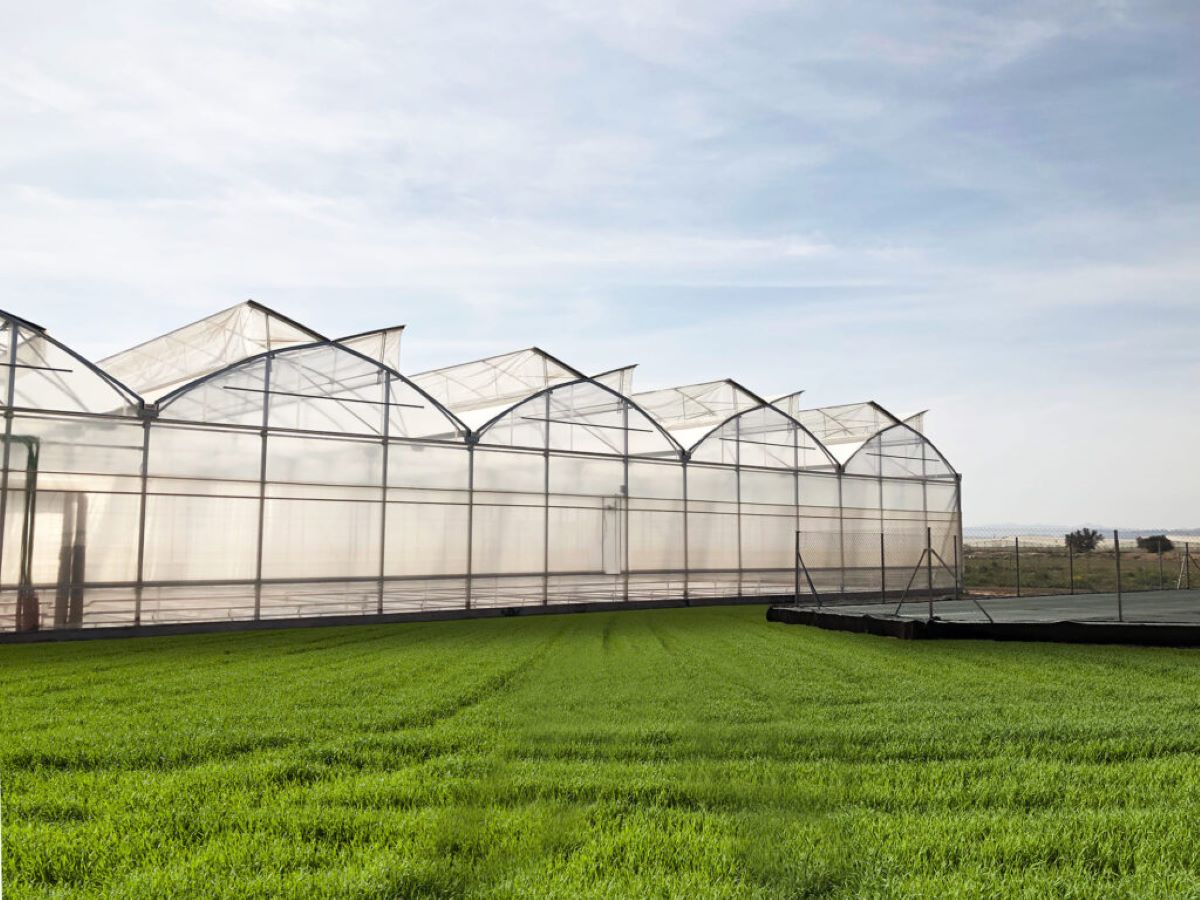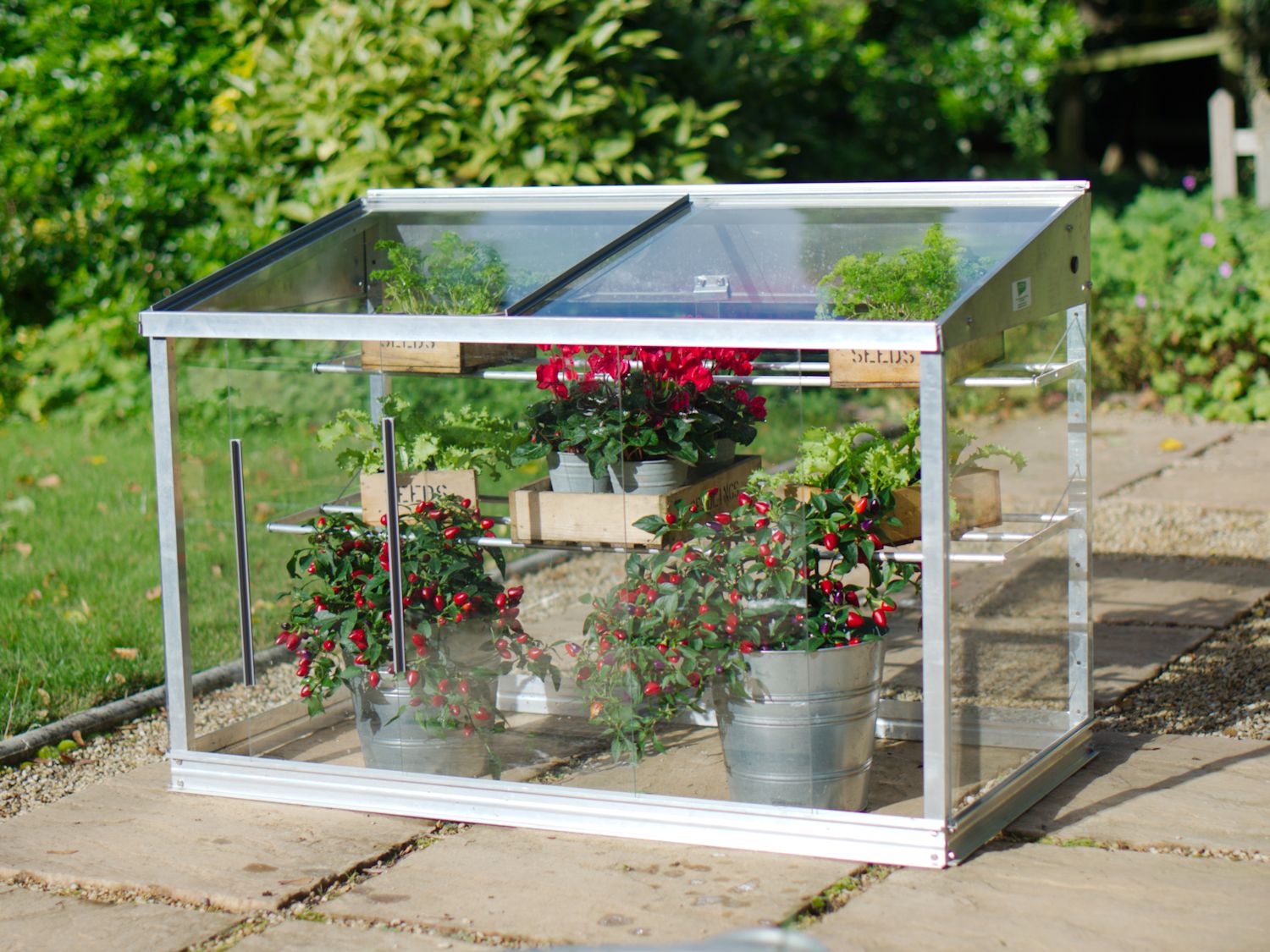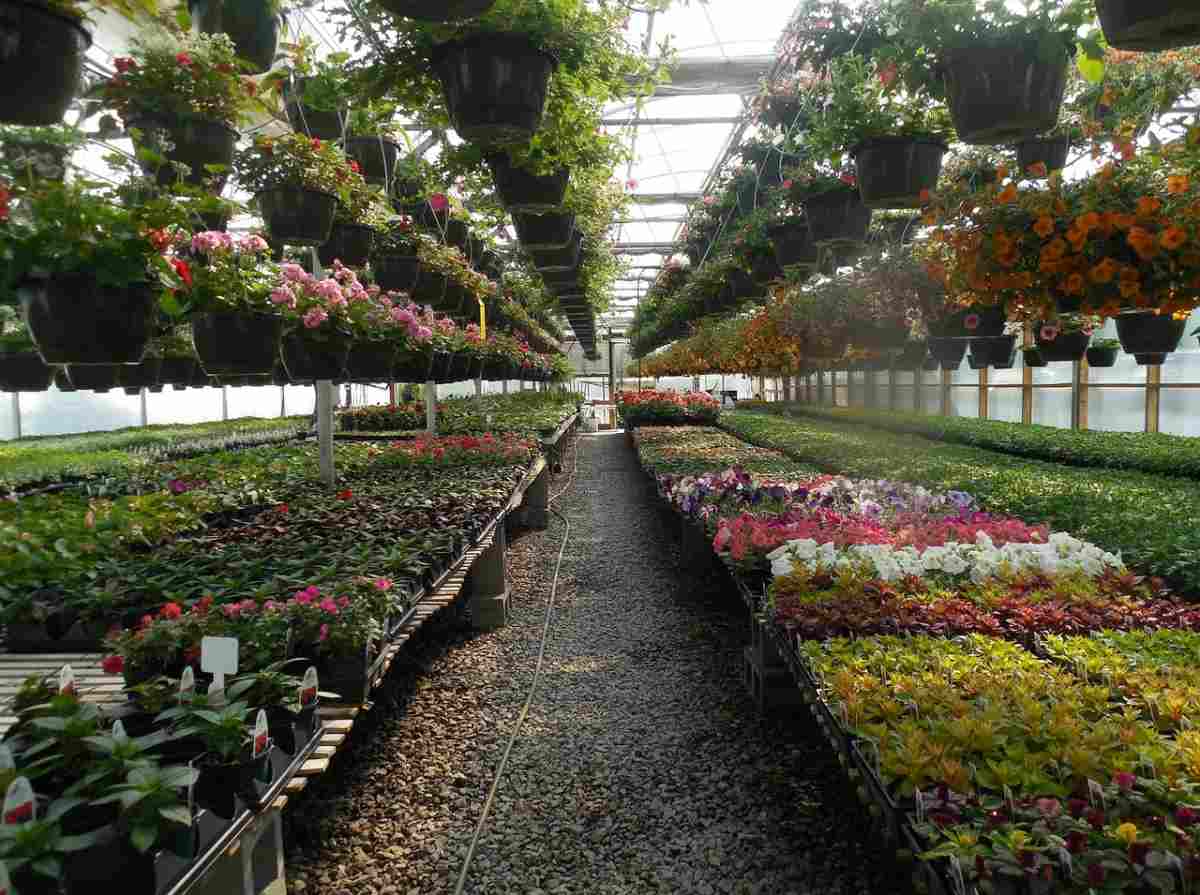Home>Gardening Tips and Tricks>Eco-Friendly Gardening>What Are Examples Of Greenhouse Gasses?


Eco-Friendly Gardening
What Are Examples Of Greenhouse Gasses?
Modified: January 22, 2024
Discover various examples of greenhouse gases and their impact on the environment. Learn how eco-friendly gardening practices can help reduce these emissions.
(Many of the links in this article redirect to a specific reviewed product. Your purchase of these products through affiliate links helps to generate commission for Chicagolandgardening.com, at no extra cost. Learn more)
Table of Contents
Introduction
Welcome to the world of eco-friendly gardening! As more and more individuals become conscious of the impact their actions have on the environment, eco-friendly gardening has gained popularity. This sustainable approach to gardening focuses on reducing harm to the planet by incorporating practices that conserve resources, protect biodiversity, and minimize pollution.
Eco-friendly gardening is not just about beautifying your outdoor space; it’s about making a positive contribution to the earth and creating a harmonious relationship with nature. By adopting eco-friendly gardening practices, you can create a nurturing environment for plants, wildlife, and beneficial insects, while minimizing your carbon footprint and preserving natural resources for future generations.
Whether you have a small balcony garden or a sprawling backyard, there are countless eco-friendly gardening techniques and principles that can be applied. From using organic fertilizers and minimizing water consumption to promoting biodiversity and reducing waste, eco-friendly gardening offers a holistic approach to sustainable living.
In this article, we will explore examples of greenhouse gases and their impact on the environment. Greenhouse gases are gases that trap heat in the Earth’s atmosphere, contributing to global warming. Understanding these gases and their sources is crucial in our collective effort to combat climate change and create a more sustainable future.
So, let’s dig deeper into the world of greenhouse gases and unravel the ways in which they impact our planet.
Carbon dioxide (CO2)
Carbon dioxide (CO2) is the most common greenhouse gas and a major contributor to global warming. It is released into the atmosphere through natural processes like volcanic eruptions and the respiration of living organisms. However, human activities, particularly the burning of fossil fuels such as coal, oil, and natural gas, have significantly increased the concentration of CO2 in the atmosphere since the industrial revolution.
CO2 emissions from burning fossil fuels account for approximately 75% of total greenhouse gas emissions. Power plants, vehicles, and industries are the main culprits in releasing massive amounts of CO2 into the air. Deforestation also plays a significant role in exacerbating CO2 levels, as trees absorb CO2 and release oxygen through the process of photosynthesis.
The accumulation of CO2 in the atmosphere creates a greenhouse effect, trapping heat and leading to a rise in global temperatures. This phenomenon, known as global warming, has far-reaching consequences for the environment, including melting ice caps and glaciers, rising sea levels, and extreme weather events.
To mitigate the impact of CO2 emissions, there are several eco-friendly gardening practices you can adopt. Planting trees and creating green spaces helps absorb and store CO2, as trees naturally remove CO2 from the air during photosynthesis. Additionally, reducing overall energy consumption and utilizing energy-efficient appliances and vehicles can help decrease CO2 emissions.
Another method to reduce CO2 levels is by practicing composting. Instead of sending organic waste to landfills where it produces methane, a potent greenhouse gas, composting allows organic materials to break down naturally, releasing CO2 in a controlled manner. The resulting compost can then be used to enrich the soil in gardens, promoting healthy plant growth.
By implementing these eco-friendly gardening practices and making conscious choices to reduce CO2 emissions in our daily lives, we can contribute to mitigating the effects of climate change and preserving the planet for future generations.
Methane (CH4)
Methane (CH4) is another significant greenhouse gas that plays a crucial role in climate change. It is produced through both natural processes and human activities. Methane is emitted during the decay of organic matter, such as in wetlands, swamps, and rice paddies. It is also released during the extraction and transport of fossil fuels, livestock farming, and the decomposition of organic waste in landfills.
Methane is a potent greenhouse gas, with a much higher warming potential than carbon dioxide. In fact, over a 20-year period, methane is estimated to be 84 times more effective at trapping heat in the atmosphere compared to CO2.
One significant source of human-induced methane emissions is the agriculture sector, particularly livestock farming. Ruminant animals, such as cattle and sheep, produce methane during digestion. The methane released from animal flatulence and manure contributes to the overall methane levels in the atmosphere.
Eco-friendly gardening practices can help reduce methane emissions and combat climate change. One approach is to incorporate sustainable farming practices, such as organic and regenerative agriculture. These methods focus on soil health and natural fertilization, reducing the need for synthetic inputs that release methane during their production.
In addition, managing organic waste through composting can significantly reduce methane emissions from landfills. By diverting organic waste away from landfills and instead using it to create nutrient-rich compost, we not only reduce methane production but also promote a circular economy and sustainable gardening practices.
Furthermore, reducing our reliance on fossil fuels and transitioning to renewable energy sources can help decrease methane emissions associated with extraction, transportation, and combustion. Solar and wind power are clean energy alternatives that have minimal greenhouse gas emissions and can power our homes and gardens sustainably.
By implementing these eco-friendly gardening strategies and making conscious choices in our agricultural practices and waste management, we can reduce methane emissions and contribute to mitigating climate change while creating a healthier and sustainable environment for all.
Nitrous oxide (N2O)
Nitrous oxide (N2O) is a powerful greenhouse gas that not only contributes to global warming but also plays a significant role in the depletion of the ozone layer. It is emitted through various natural and anthropogenic activities, including agricultural practices, burning of fossil fuels, and industrial processes.
Agricultural activities, such as the use of synthetic fertilizers and the management of livestock manure, are major sources of nitrous oxide emissions. Synthetic fertilizers contain nitrogen compounds that can undergo chemical reactions in the soil, leading to the release of nitrous oxide. Similarly, when livestock waste decomposes, it produces nitrogen-rich runoff that can emit nitrous oxide into the atmosphere.
In addition to agriculture, the combustion of fossil fuels also contributes to nitrous oxide emissions. The burning of coal, oil, and natural gas in power plants, vehicles, and industries can release nitrogen oxide pollutants that eventually convert into nitrous oxide in the atmosphere.
Eco-friendly gardening practices can help minimize nitrous oxide emissions and promote a sustainable future. One approach is to adopt organic farming methods that utilize natural fertilizers, such as compost and manure. These materials release nutrients slowly, reducing the chances of nitrogen converting into nitrous oxide in the soil.
Another strategy is to practice efficient irrigation techniques, as excess water can create anaerobic conditions in the soil, leading to the production of nitrous oxide. By using drip irrigation or rainwater harvesting systems, we can minimize water usage and prevent the unnecessary release of nitrous oxide.
Furthermore, nitrogen management is crucial in reducing nitrous oxide emissions. It involves optimizing the use of nitrogen-based fertilizers, ensuring they are applied at the right time and in the right amounts. This helps plants absorb the nutrients more efficiently, minimizing nitrogen runoff and subsequent nitrous oxide emissions.
By implementing these eco-friendly gardening practices and adopting sustainable agricultural methods, we can reduce nitrous oxide emissions and contribute to a healthier atmosphere. Additionally, supporting policies and initiatives that promote sustainable farming practices can have a broader impact on reducing nitrous oxide emissions on a larger scale.
Fluorinated gases
Fluorinated gases, also known as F-Gases, are a group of synthetic greenhouse gases that have a high global warming potential. These gases are primarily used in various industrial applications, including refrigeration, air conditioning, and electronics manufacturing. The most common fluorinated gases are hydrofluorocarbons (HFCs), perfluorocarbons (PFCs), and sulfur hexafluoride (SF6).
HFCs are widely used as refrigerants in air conditioning and refrigeration systems. While they do not deplete the ozone layer like chlorofluorocarbons (CFCs) and hydrochlorofluorocarbons (HCFCs), HFCs have a significant impact on global warming due to their high global warming potential.
PFCs are primarily used in the electronics industry for processes such as semiconductor manufacturing. They have an extremely high global warming potential and can stay in the atmosphere for long periods, contributing to the greenhouse effect.
SF6 is commonly used as an insulating gas in high-voltage electrical equipment. It has an exceptionally high global warming potential and can persist in the atmosphere for thousands of years, making it a significant contributor to climate change.
Reducing the use of fluorinated gases and transitioning to environmentally friendly alternatives is crucial in mitigating their impact on the environment. In recent years, there has been a global effort to phase out the use of certain fluorinated gases through international agreements, such as the Kigali Amendment to the Montreal Protocol.
Moreover, eco-friendly gardening can indirectly contribute to the reduction of fluorinated gas emissions. By implementing energy-efficient practices in our homes and gardens, we can reduce the need for air conditioning and refrigeration, ultimately decreasing the demand for HFCs as refrigerants.
In addition, supporting initiatives that promote the responsible disposal and recycling of electronic waste can help minimize the release of PFCs from discarded electronics. By opting for eco-friendly electronic products and encouraging manufacturers to use alternatives to PFCs, we can further reduce their environmental impact.
Efforts to reduce the use of SF6 in electrical equipment and promote the development of more sustainable alternatives are also essential. By addressing leakage issues and implementing proper handling and recycling of SF6, we can minimize its contribution to global warming.
Overall, transitioning away from fluorinated gases and adopting eco-friendly alternatives is crucial in mitigating their impact on climate change and preserving the environment for future generations.
Conclusion
Eco-friendly gardening and sustainable practices play a crucial role in mitigating the impact of greenhouse gases on the environment. By understanding the sources and effects of greenhouse gases such as carbon dioxide, methane, nitrous oxide, and fluorinated gases, we can better address climate change and work towards a more sustainable future.
Carbon dioxide, primarily emitted from the burning of fossil fuels, is a major contributor to global warming. By adopting eco-friendly gardening practices such as planting trees, reducing energy consumption, and practicing composting, we can help absorb and reduce CO2 emissions in the atmosphere.
Methane, released from both natural and human activities, has a significant warming potential. Through sustainable farming practices, proper waste management, and transitioning to renewable energy sources, we can lower methane emissions and mitigate its impact on climate change.
Nitrous oxide, mainly produced through agricultural practices and the burning of fossil fuels, can be reduced by implementing organic farming, efficient irrigation techniques, and nitrogen management strategies. These eco-friendly gardening practices not only minimize nitrous oxide emissions but also promote healthier soils and sustainable agriculture.
Fluorinated gases, commonly used in industrial applications, have a high global warming potential. By transitioning to environmentally friendly alternatives and supporting initiatives that promote responsible usage and disposal of these gases, we can minimize their contribution to climate change.
Overall, eco-friendly gardening provides us with an opportunity to make a positive impact on the environment. By adopting sustainable practices, conserving resources, reducing emissions, and promoting biodiversity, we can create a greener and more sustainable future for ourselves and generations to come.
So, let’s embrace eco-friendly gardening and join the movement towards a healthier and more sustainable planet!








